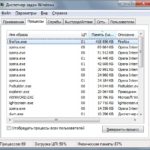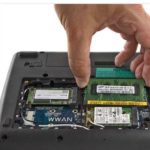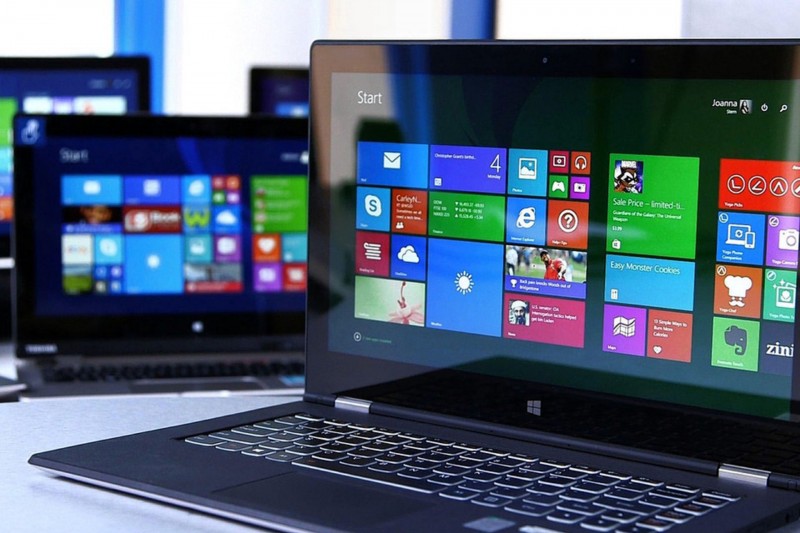How to open task manager on laptop
Every computer user has at least once found himself in a situation where the desired program freezes and the chance of restarting it disappears before our eyes. As a result, there is no opportunity not only to finish what you started, but even to do something else. Disconnecting the device from the network to reboot is a drastic decision that leaves no chance of saving important data.
How to save the system from internal errors due to an emergency shutdown, and yourself and your nervous system from thoughts: “You need to start everything over again, that’s 10 hours of work!”
It's not as scary as it seems. Windows developers took such issues into account and created a tool that allows you to calmly solve them.
The task manager is a special system tool for monitoring running processes and system resources. With its help, you can remove the task of executing a particular program, evaluate it, find out how RAM is distributed at this moment, configure startup applications in a way that is convenient for you, and so on.
We'll tell you how to use this magical utility further.
The content of the article
From desktop
 We bring to your attention the easiest and fastest way.
We bring to your attention the easiest and fastest way.
On the bottom strip, called the “Taskbar” on the laptop (the line where the “Start” menu, date and time is located), right-click. A list of different possible actions appears, in which we are interested in “Launch the task manager”. Select, click the mouse - done!
Keyboard shortcut
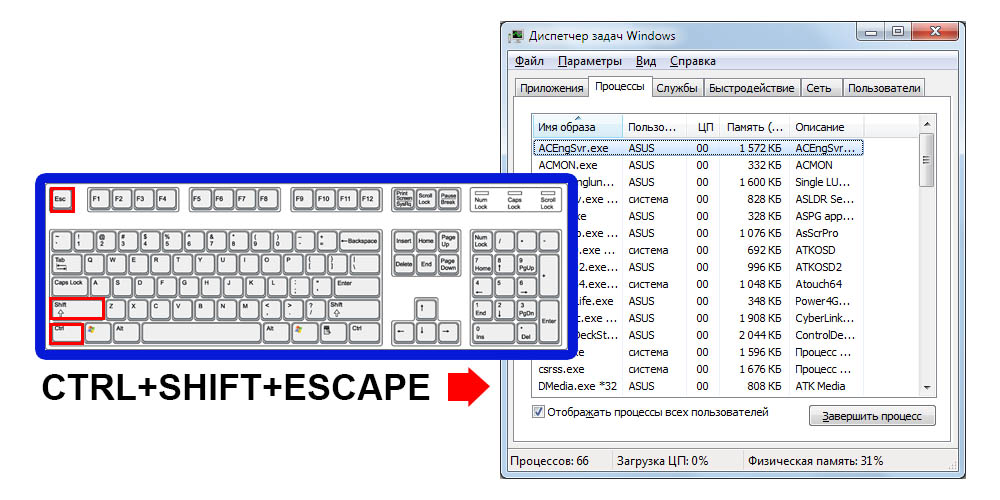 Let's complicate a simple task: instead of one button, press three!
Let's complicate a simple task: instead of one button, press three!
On the keyboard we simultaneously type “Ctrl”, “Shift” and “Esc” (all of them are located on the leftmost part of the device). After this simple combination, the command we need is automatically launched.
From the keyboard
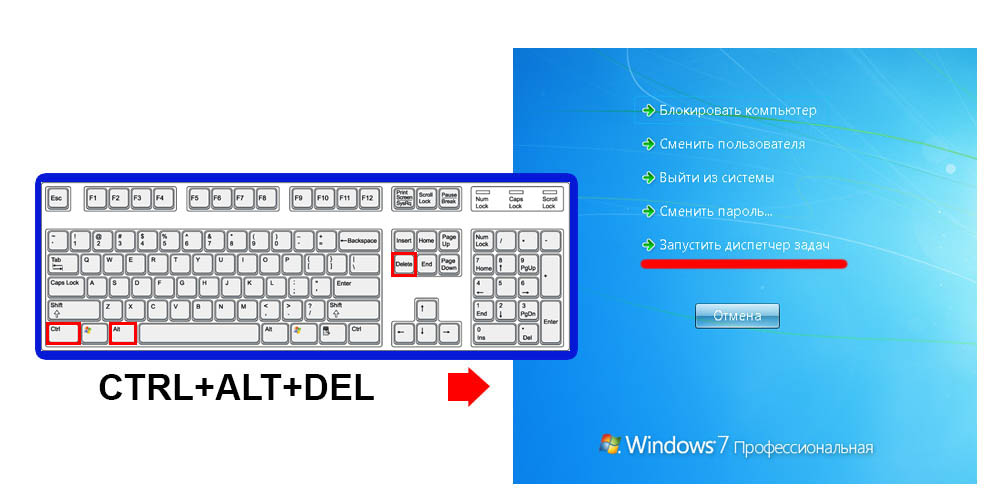 The most famous method, which is literally a lifesaver in critical moments.
The most famous method, which is literally a lifesaver in critical moments.
To begin, “minimize the system” by pressing “Ctrl” + “Alt” + “delete”. On a blue background we see a list of everything we can do. And among these items we find “Task Manager”, which can now be opened with a regular mouse click.
Using the "Run" function
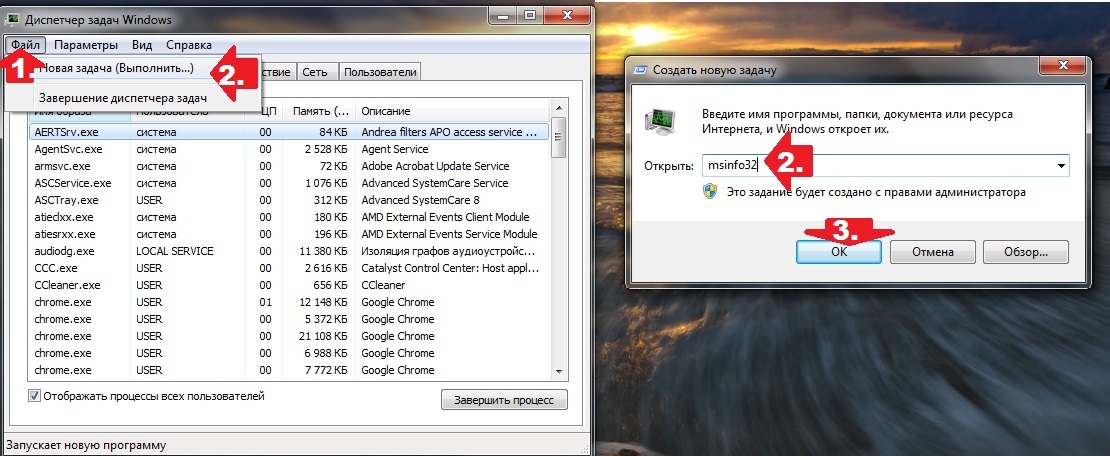 This method is for those who are not looking for easy ways.
This method is for those who are not looking for easy ways.
To open the Run window, press “Win” + “R”.
REFERENCE! The "Win" button on the keyboard is located in the lower left corner between "Fn" (or "Ctrl") and "Alt".
Now enter the command “taskmgr” into the empty line and click “OK”. In general, that's all.
Sometimes things don't go as smoothly as planned. Instead of the desired window, a message may pop up stating that “Task Manager has been disabled by the administrator.” In such a situation, it must be turned on before starting.
For this purpose, we will again use the “Run” function, only now we specify the “gpedit.msc” command, which opens the “Group Policy” window. We then follow the algorithm:
- go through the path: “User Configuration” - “Administrative Templates” - “System” - “Ctrl + Alt + Del Capabilities”;
- select “Delete Task Manager” by double-clicking on it;
- in the “DZ removal properties” select the value “Disabled”;
- Click “Apply” and “OK”.
After all this, you can re-open the program using any of the methods suggested above.
So, the utility is running, you are happy, but the problem described at the beginning of this text is still present. Calmly! We'll solve everything. First let's take a look at the interface. All functionality is divided into blocks:
- “Services” - here all the services that the computer needs to operate are listed, indicating their status (running or stopped);
- “Details” - designed to collect all information about each process in one place. Here, for example, you can see which program the task being performed belongs to;
- “Users” - contains information about all users of this computer (if you are not the only one using it). This way you can determine who loads the device the most;
- “Startup” - provides a list of programs that can be launched simultaneously with the system, and the ability to customize this for yourself;
- “Application log” - here, using non-zero parameters, you can determine which applications are currently active;
- “Performance” - graphically shows what is currently being used and to what extent: how full the memory is, how heavily the processor is loaded, etc.;
- “Processes” is the very section that talks about each task being performed. Returning to the question about a frozen program: this is where you can find it, right-click on it and select “End task”.
Now you know everything you need to know about one of the most informative and useful tools in the Windows system.

